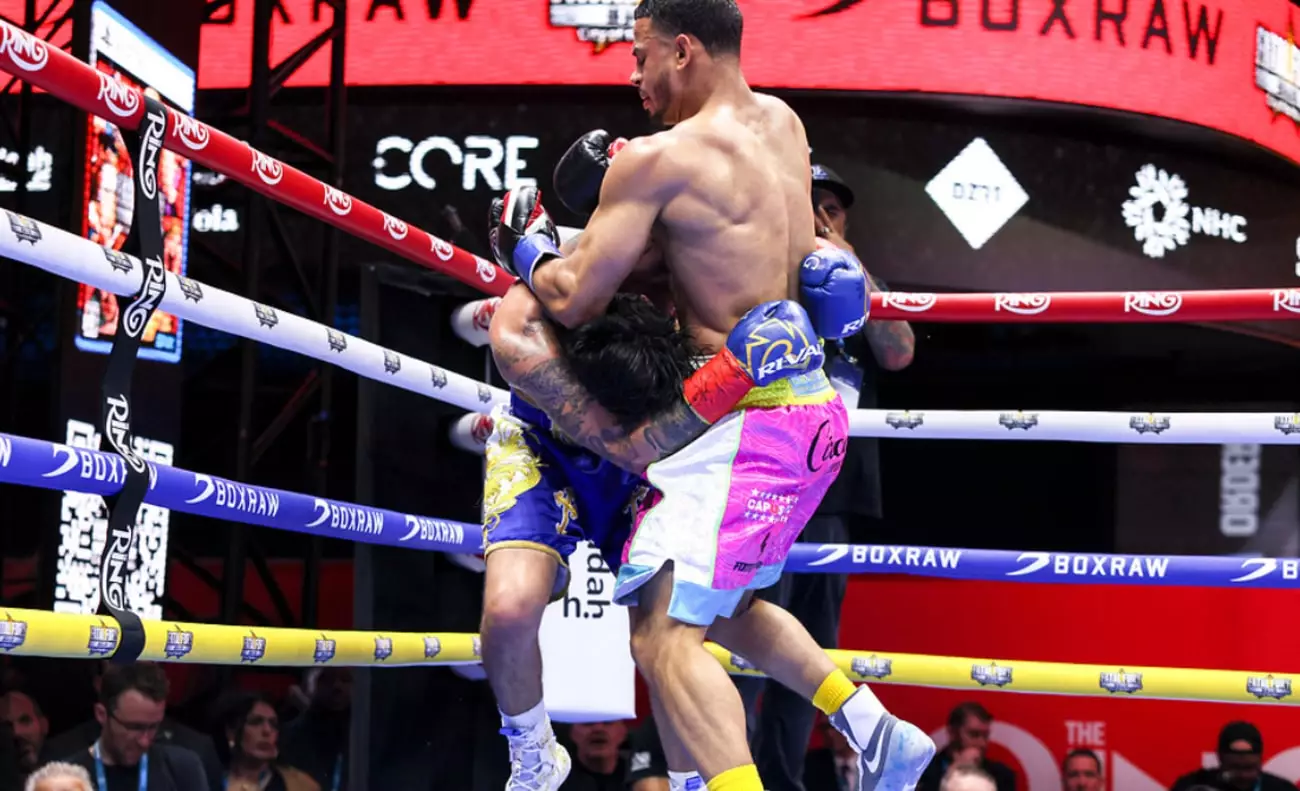Rolando “Rolly” Romero made an impactful statement in the boxing world by decisively defeating Ryan Garcia on Saturday night at Times Square, New York. This was not just another win; it was a testament to the evolution of Romero’s fighting style, highlighted by his discipline and tactical approach in the ring. Romero, now boasting a record of 17-2 with 13 knockouts, leveraged his newfound focus to capture the WBA ‘regular’ welterweight title. Unlike his previous fights, where recklessness sometimes dictated his actions, this bout showcased a mature athlete who understood the delicacies of high-stakes boxing.
Power Plays and Psychological Warfare
The early rounds bore witness to a dramatic power shift. Romero’s early shots were not just punches; they were issued with the intent to psychologically undermine Garcia. Observers noted a tangible hesitance in Garcia (24-2, 20 KOs), a reflection of the fear instilled by Romero’s ferocious left hooks. It became clear that Garcia was less inclined to engage, opting instead for a defensive stance that signaled he valued survival over aggression. After being knocked down in the second round, Garcia’s response was strategic but cautious—he effectively chose to fight not to lose, a drastic shift from the bravado seen in his earlier performances.
Reinforced Resolve
Romero’s strategy was a masterclass in resilience and strength. This transformed version of him, now competing in the welterweight category, appeared noticeably more muscular and robust. The punches that would have compromised him at lighter weights seemed to bounce off without any significant impact. This shift suggests that moving up a weight class did not just bring added strength but also a psychological composure that enabled him to absorb strikes that once might have been devastating. This newfound muscularity was more than physical; it symbolized a fighter ready to embrace a new chapter of challenges.
The Ramifications of Defeat
Post-fight discussions shifted dramatically, particularly focusing on the implications of Garcia’s loss for the future of the lightweight division. With Devin Haney present and questioning Garcia about the fight, it was a clear indication of the stakes involved. The looming rematch between Haney and Garcia, originally a lucrative opportunity for both, now sits precariously in jeopardy. Given the nature of their pre-fight conditions, Haney might now need to reassess his focus moving forward. The question of whether Romero might step into Haney’s path as a new contender adds an intriguing layer to the post-fight narrative.
An Evolving Landscape
In the aftermath of this bout, it is evident that the landscape of boxing is ever-evolving. Romero’s performance may signal a new era, one where skill and power are harmonized rather than existing in conflict. Meanwhile, for Garcia, the loss is not merely a setback; it raises crucial questions about resilience and future tactics. This fight serves as a reminder that in boxing, the ring is not just a battleground for physical prowess, but a stage where mental fortitude is equally pivotal for sustaining success. The implications of this fight stretch beyond the immediate, setting the stage for new rivalries and possibly reshaping the lightweight division for years to come.


Leave a Reply